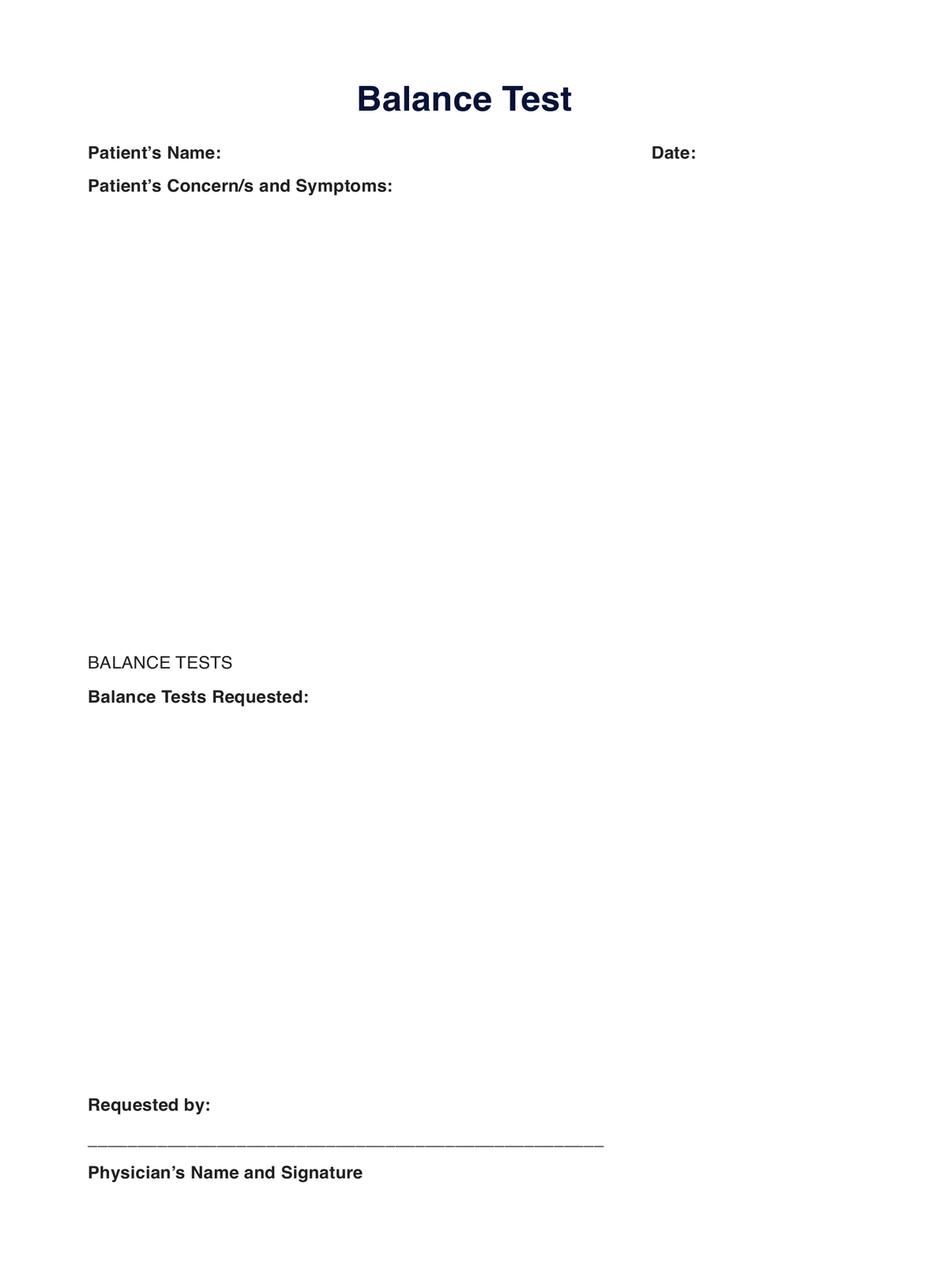Physicians, geriatric specialists, sports doctors, physical therapists, occupational therapists, and researchers are among the healthcare practitioners who typically request a balance test.

Balance Test
Assess your patient's capability to maintain equilibrium and stability and identify possible underlying balance disorders with balance tests.
Use Template
Balance Test Template
Commonly asked questions
Balance tests are used when the patient exhibits or expresses concerns about symptoms related to balance disorders or conditions.
Completing a balance test can take as short as a few minutes. Duration usually depends on the type of balance test the patient must undergo.
EHR and practice management software
Get started for free
*No credit card required
Free
$0/usd
Unlimited clients
Telehealth
1GB of storage
Client portal text
Automated billing and online payments











